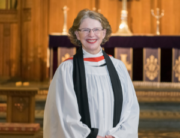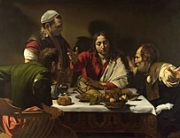A sermon given during 6:00pm Choral Evensong, by The Rev’d Canon Jenny Wilson, on the 17th September 2023.
Exodus 15:19-26, Psalm 103:8-13
In the name of God, creating, redeeming, sanctifying, … Amen.
In a letter, to the recent G20 meeting in Delhi, the leaders of a number of church bodies wrote: Nature and the environment have been reduced to an “asset class” for financial gain, and the Earth is treated as a tap and a sink — a place from which unlimited resources are drawn and unlimited pollution dumped. The consequences include runaway climate change and unprecedented biodiversity loss that now pose existential threats to present and future life on the planet.[1]
We may well feel helpless in response to these words. We may well wonder how we can pray and what actions we can take. One way is to sit with the discomfort of these words knowing that we are in God’s presence.
In St Peter’s Cathedral, during this Season of Creation, we are reflecting on ways of praying and acting for the healing of creation. The scriptures make clear that God creates and loves all things, humanity, animals and other species, trees, plants, and the land on which all things find their home. We know the reality of the damage done by climate change and by the fact that many species are endangered or tragically extinct.
Prayer for the healing of creation may be done in many ways. We might spend time sitting quietly in a favourite place in nature, in a garden, by the sea, in the bush, remembering that the place we love is named and loved by God. We might sit with verses of scripture that remind us of God’s love for creation and of the imperative that we care for the earth.
Last Monday a Cathedral group visited the SA Museum Australian Geographic Nature Photographer of the Year Exhibition. We spent time pondering the photographs that we found most beautiful and those we found most disturbing. We considered that this might be a way of praying for creation.
There were a number of photographs which disturbed the group of us who gathered in the museum last Monday. One of the ones that moved me most was of a corella. A lovely white bird with tinges of red around its face. We see them often in the nearby parklands where the horses are. This corella looked out at those viewing the photograph with a wistful expression. Its face was covered in plastic – the lid of a drink container fitted perfectly around its lovely face. It didn’t seem to be in a panic – it just gazed out from behind the plastic. It engendered panic, or at least concern, in the one gazing at the photo. We just longed that the bird would have remained still long enough for someone to set it free from its plastic mask.
Others viewing the exhibition were disturbed by different photos. There was one of a large bird caught on a barbed wire fence, its dead body spread out over layers of the fence. Another showed a bird dead by the side of the road knocked down by a truck which was carrying sheep to an abattoir. We reflected that the driver was most likely unaware of the death of the bird, more aware, presumably of the fate that awaited those in his carriage.
There was a section in the museum for endangered species. A beautiful seahorse gazed at the viewer framed by the coral that in the sea makes up its home. A numbat glanced at the photographer from amidst some wildflowers. The photograph that won the exhibition shouted out to the viewers about the effect of global warming. Entitled “My country burns”, the photographer wrote this, “Nothing can prepare someone for being straight in the line of a firestorm with a built-in flashover and temperatures exceeding 1000 degrees Celcius. While protecting my home on New Year’s Eve 2019, daylight turned into darkness with 40m plus flames. The image was taken 20 minutes after the fire front had passed.” We were drawn into the image of trees and fire and smoke, no doubt shocked by the danger to the one taking the photograph.
Beauty, plastic, fire, species in danger, death cause by human carelessness. All these photographs caused to ponder on the love of God for creation, the beauty of creation and the threat to creation from human behaviour which, of course, included a little of our own. We were not immune from blame.
Pondering photographs in this way might be considered a prayer we thought. Might we be converted just a little more in the deep truth that God loves creation and humanity has a responsibility to support God in its care.
Prayer for creation takes place also in the pondering of scripture. Scholars devoted to this idea encourage us to reflect on scripture with the earth in mind. The earth might be viewed as a character, a presence, one loved and made by God, one in need of healing, of being set free.
This evening’s reading from Exodus gives us a glimpse of the story of the Exodus, the story of God’s freeing of the people of Israel from slavery in Egypt.
Escaping from Egypt the Israelites are followed by the horses of Pharaoh with his chariots and his chariot drivers. When they come to the Red Sea the horses and chariot riders go into the sea, and God brings back the waters of the sea upon them; the Israelites, though, walked through the sea on dry ground.
Attributing this miracle to the work of God, Miriam, Moses’ sister, sings:
‘Sing to the Lord, for he has triumphed gloriously;
horse and rider he has thrown into the sea.’
Might we imagine the story of Exodus with earth as the one enslaved, enslaved by those who would exploit her, enslaved really by us. Might we imagine that the freeing initiative of God, told in the Exodus story, is generously given to the earth as it was generously given to the Israelite people. God’s longing is to set free all who are enslaved. Might we imagine that longing also applies to the earth? How do we feel that we are in the place of the Egyptians, as the ones who enslave? How does it feel that God longs to set the earth free?
Our psalm is gentle as we ponder the Exodus story in this way:
The Lord is full of compassion and mercy
long-suffering, and of great goodness.
… For look how high the heaven is in comparison of the earth
so great is his mercy also toward them that fear him.
Look how wide also the east is from the west
so far hath he set our sins from us.
Yea, like as a father pitieth his own children
even so is the Lord merciful unto them that fear him.
The psalm seems to give us hope. Hope for humanity and hope for the earth. God is full of compassion and mercy, long-suffering and of great goodness. As we ponder the struggle to care for creation alongside the truth of climate change and the threat to many species, as we worry about the damage that our excessive use of plastic and other waste products does to many creatures and ecosystems, we hear of God. Compassionate, merciful, long-suffering God. God who sees the places and creatures and damage portrayed in the photographs at the exhibition at the SA Museum, who sees the grave concern of so many who wonder how we can help bring healing to the earth. God.
We hold out our longing for the healing of the earth and place it in the hands of God. Placing the suffering earth into the compassionate hands of God.





